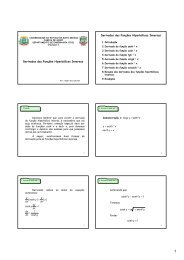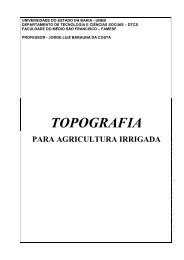Anuário Brasileiro do Arroz 2011 - Unemat
Anuário Brasileiro do Arroz 2011 - Unemat
Anuário Brasileiro do Arroz 2011 - Unemat
Create successful ePaper yourself
Turn your PDF publications into a flip-book with our unique Google optimized e-Paper software.
the market. The production of 1.05 million tons is absorbed by<br />
the sector, which imports upwards of 400 thousand tons of rice<br />
from Rio Grande <strong>do</strong> Sul a year – where almost 9 million tons are<br />
harvested. “For smaller-than-expected crops there is always a solution;<br />
the problem lies in the profits derived by the growers and<br />
in the prices in force since late 2010”, he comments.<br />
In April <strong>2011</strong>, a 50-kg sack of rice in the husk was fetching<br />
R$ 20, on average, in South Santa Catarina, although the<br />
cooperative was paying R$ 21. As a rule, Santa Catarina remains<br />
rather immune to the price oscillations in Rio Grande <strong>do</strong> Sul.<br />
Nonetheless, with the industries of both states competing for the<br />
same market and as prices fell considerably, there was no escape.<br />
“The concentration of almost 75% of the crop in South Brazil and<br />
the pressure coming from the Mercosur supplies, put us all in the<br />
same boat”, the president of Cooperaja acknowledges.<br />
NO TIME WASTED According to Vanir Zanatta, president<br />
of Cooperaja, this is the right moment for the production chain<br />
to <strong>do</strong> the homework, adjust the course and seek solutions. “We<br />
hope that the mechanisms enacted by the government and the<br />
shipment initiatives will yield good results in the second half of<br />
the year”, he comments. In the meantime, he maintains that it<br />
is essential for the growers to reduce their production costs in the<br />
coming crop. “In <strong>2011</strong>, the market will continue lagging behind”,<br />
he anticipates. The Cooperative has 1,100 members and processes<br />
175 thousand tons of the cereal a year, in two industries. In<br />
all, Santa Catarina is home to 62 rice industries. In his view, the<br />
low impact of the commercialization mechanisms, especially of<br />
the Federal Government’s Acquisition Program (AGF’s) and of the<br />
announced option contracts, which had not entered into force by<br />
late April, stem from too much bureaucracy involved, the need<br />
for guarantees and the difficulty in contacting the farmers. And<br />
he regrets the fact that physical persons are not allowed to <strong>do</strong><br />
their AGF using their own warehousing facilities. The Premium per<br />
Output Flow (PEP) is the most efficient one at the moment, as<br />
it allows for exporting all surpluses in the Country”, he explains.<br />
A PORTRAIT<br />
Santa Catarina uses the pre-germination method in 99% of its rice fields, involving 8 thousand growers, spread across 65<br />
counties. The remaining one percent of the farmers grows ecology-friendly “native” rice, and alternative varieties for small-scale<br />
family farmers. In the North of the State, many farmers anticipate the pre-germinated crop in order to harvest he second growth<br />
of the crop. After harvesting the first crop, they fertilize the area again and reach productivities upwards of 2,500 kg per hectare.


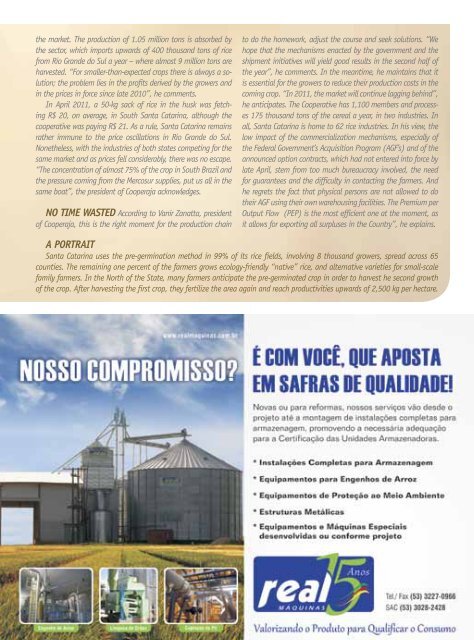
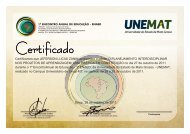
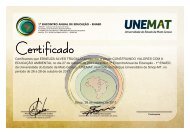
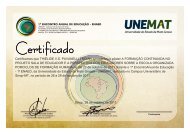
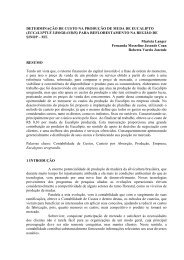
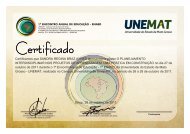
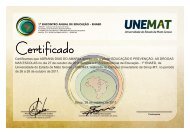
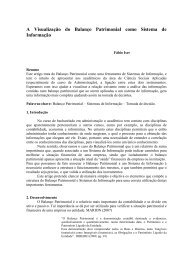
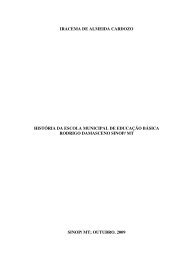

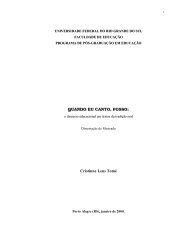
![Aula 31 - Funções Hiperbólicas [Modo de Compatibilidade] - Unemat](https://img.yumpu.com/14334654/1/184x260/aula-31-funcoes-hiperbolicas-modo-de-compatibilidade-unemat.jpg?quality=85)
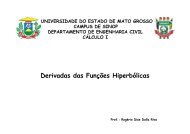
![Aula 31 - Funções Hiperbólicas [Modo de Compatibilidade] - Unemat](https://img.yumpu.com/14332146/1/190x135/aula-31-funcoes-hiperbolicas-modo-de-compatibilidade-unemat.jpg?quality=85)
